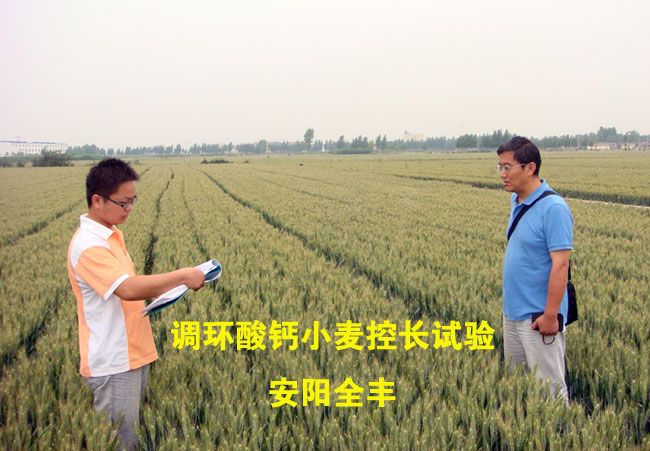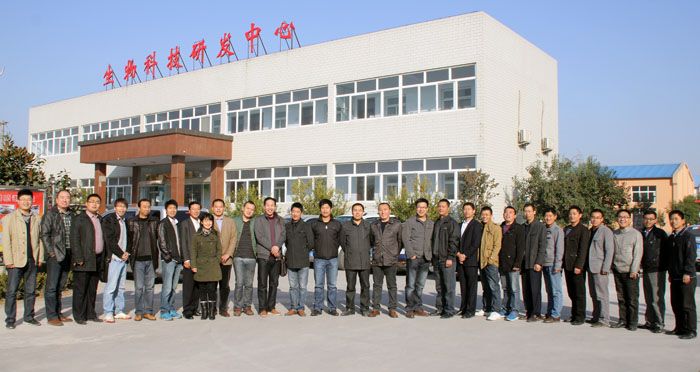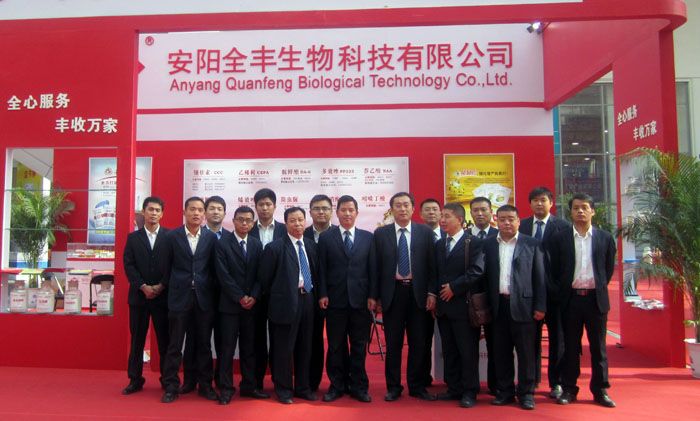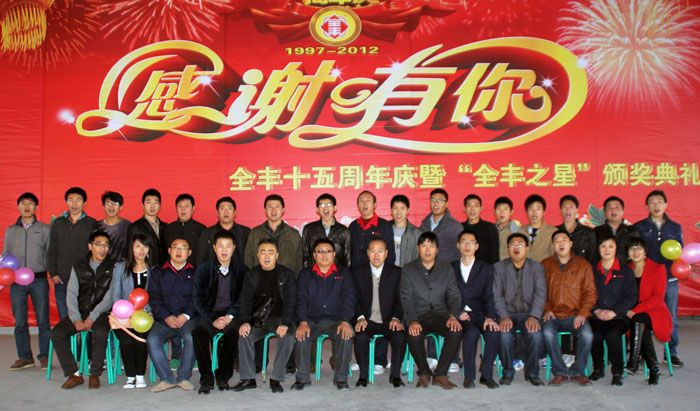-
NEWS

2013-12-09
FineAmericas plant growth regulator Blush (R) was registered in the United StatesFineAmericas is a leading company in the industry in the production and marketing of plant growth regulators for fruit planting. Recently, the company announced its new plant growth regulator product Blush ® It is registered with the United States federal government. Blush ® Its active ingredient is propyl jasmonate (PDJ), which is used to improve the color of red apple.Greg Johnson, chairman of Fine America, said: "We are very happy with Blush ® Obtain government registration. According to the data we received from partners in several key apple planting states, Blush is used to improve the color of fruit ® The test group of has better performance than the fruit that uses general methods and does not use any products. " Johnson added that Blush ® It can be widely used in a variety of different varieties, including Honeycrisp apple, Gala apple, Fuji apple, Macintosh apple and other two-color apples, to improve the color of apple and make these popular varieties more competitive in the market.Propyl jasmonate is a synthetic jasmonate, which belongs to a new plant hormone group and has good physiological characteristics. In addition to fading the green of apple, propyl jasmonate can also make the color of apple more attractive by strengthening the aggregation of anthocyanins. Anthocyanin is a red pigment, belonging to flavonoids. In addition to stimulating apple coloring, anthocyanin is also a powerful antioxidant.Johnson concluded: "Blush ® It is another example of our company's commitment to providing help to American fruit growers. Blush ® And our existing products including Exilis ® PlusFalgro ® Novagib ® And Perlan ® Together with plant growth regulator products, it has given American apple growers a valuable tool to meet their consistent requirements for high-quality planting. " (World Agrochemical Network)
More >
-
NEWS

2013-12-09
The European Union has made it clear that choline chloride can be used as a pesticide adjuvantSource: Pesticide Industry NetworkThe European Union Standing Committee on the Food Chain and Animal Health confirmed that there is new evidence that choline chloride is an auxiliary rather than an original drug. In the future, pesticides containing choline chloride will be registered and used in the EU. Choline chloride was previously included in the EU's review list of existing technical drugs, but the European Commission decided not to re-register it in 2004 because it did not submit further data.
More >
-
NEWS

2013-12-09
The Ministry of Industry and Information Technology has issued a new standard for the limit of harmful solvents in the standard fluthrin technical and pesticide emulsifiable concentratesThe Ministry of Industry and Information Technology issued Announcement No. 52 on the 23rd, approving 811 industrial standards such as Methyl Butenol Polyether, including 149 chemical industry standards, including two newly issued standards of permethrin technical (HG/T 4575-2013) and the limit of harmful solvents in pesticide emulsion (HG/T 4576-2013); As well as two standards that replace the standard fomesan technical (HG/T 2213-2013) and fomesan emulsifiable concentrate (HG/T 2214-2013). The above industry standards will be implemented on March 1, 2014. The main contents of the standard are shown in the table below.Standard NoStandard nameMain contents of the standardSubstitute standardImplementation dateHG/T 2213-2013Hecaodan technicalThis standard specifies the requirements, test methods, marking, labeling, packaging, storage and transportation, and acceptance period of Hecaotan technical.HG 2213-19912014-3-1This standard is applicable to the technical drug of focaodan, which is composed of focaodan and impurities produced in its production.HG/T 2214-2013Hecaotan emulsifiable concentrateThis standard specifies the requirements, test methods, marking, labeling, packaging, storage, transportation and warranty period of Hecaotan emulsifiable concentrate.HG 2214-19912014-3-1This standard is applicable to the preparation of Hecaotan emulsifiable concentrate by dissolving Hecaotan technical and emulsifier in suitable solvent.HG/T 4575-2013Permethrin technicalThis standard specifies the requirements, test methods, marks, labels, packaging, storage and transportation of fluthrin technical.-2014-3-1This standard is applicable to the technical drug of permethrin, which is composed of permethrin and impurities produced in its production.HG/T 4576-2013Limit of harmful solvents in pesticide emulsifiable concentratesThis standard specifies the requirements, test methods, inspection rules and other contents of the allowable limit of harmful solvents in pesticide emulsifiable concentrates.-2014-3-1This standard is applicable to pesticide emulsifiable concentrates circulating in the People's Republic of China.(World Agrochemical Network)
More >
-
NEWS

2013-09-27
Zhejiang implements pesticide business license and establishes pesticide traceability systemZhejiang is a major province of pesticide production, with 117 pesticide production enterprises and 1477 registered pesticide products, ranking the third in the country in pesticide production. In recent years, Zhejiang Province has implemented the pesticide business license system and explored the establishment of pesticide traceability system, which has played an important role in strengthening pesticide management and standardizing market order, and has achieved remarkable results.First, implement pesticide business license and cultivate qualified market entities. In response to the problems of low market access threshold, multiple business entities, and difficult supervision of pesticides, Zhejiang Province promulgated and implemented the Regulations on the Prevention and Control of Crop Diseases and Pests in Zhejiang Province in 2011, which stipulates that the pesticide business shall be subject to a licensing system, and the agricultural administrative departments at or above the county level shall be responsible for the pesticide business license within their jurisdiction, and the qualification conditions for applying for the pesticide business license, the pesticide business behavior The use of pesticides and corresponding legal responsibilities shall be clearly stipulated. The Provincial Department of Agriculture has successively formulated the Measures for the Issuance of Pesticide Business Licenses in Zhejiang Province, which further details the technical personnel, operation and storage sites, relevant facilities and equipment, internal management system and other conditions required by the pesticide business units, and has made specific provisions on the application, issuance, content style, validity period, etc. of the pesticide business licenses. The implementation of pesticide business license system has played a positive role in raising the threshold of pesticide market access and standardizing pesticide business behavior. In order to facilitate the on-site law enforcement inquiry and registration of product information and standardize the law enforcement documents, the Wenzhou Agricultural Comprehensive Law Enforcement Detachment has developed and applied the agricultural law enforcement intelligent system, which has five functional modules of "product inquiry, product sampling, administrative punishment, laws and regulations, and law enforcement practice", and integrates the administrative licensing and law enforcement supervision information scattered in various industries, such as pesticides, fertilizers, seeds, veterinary drugs, into one platform, The law enforcement personnel can quickly find the source of the case, spot check, handle the case and issue the law enforcement documents at the law enforcement site, further ensuring the implementation of the pesticide business license system.The second is to establish pesticide traceability system and strengthen pesticide traceability management. In 2011, the Department of Agriculture of Zhejiang Province issued the Opinions on Promoting the Construction of Agricultural Means Supervision and Service Informatization and the Notice on Printing and Distributing the Code Management Specification for Agricultural Means Supervision and Service Informatization (Trial), which proposed to establish an agricultural means supervision information system including pesticides within five years, based on computer and network technology, and comprehensively using database, barcode, POS and other technologies, Build a real-time supervision and operation platform for agricultural materials, a real-name purchase and sale platform, a basic database for production and operation units, and a basic database for products, connect the relevant subjects of "production, marketing, use, and supervision" of agricultural materials, record the information of agricultural materials production, wholesale, retail, use, and other links through product coding, POS terminal sales, and establish a quality and safety traceability system for agricultural materials such as pesticides, Realize "information data, real name of purchase and sale, real-time supervision and service networking", and provide technical support for pesticide traceability management. Wenzhou has invested 1.8 million yuan in the development and construction of an information platform for the supervision of agricultural means of production, equipped with computers, broadband networks, code scanners, etc. This year, 50 have been built and 310 are under construction. It is planned to build an information platform covering 500 agricultural means of production enterprises by 2015. Wenzhou Meifeng Agrochemical Co., Ltd. has developed a product anti-counterfeit traceability system based on the enterprise resource planning system. Each pesticide product package is printed with a unique code. Users can query the product name, package specification, production date, dealer and other information at any time through mobile phones, which is convenient to identify the authenticity, crack down on counterfeits, and realize product traceability management. At present, 45 counties (cities, districts) and 1500 agricultural means production and operation enterprises in the province have carried out pilot projects, and 11000 agricultural means products and 8642 pesticide products have entered the traceability system database.Third, develop pesticide chain operation and standardize market operation. In recent years, Zhejiang Province has cleaned up and reorganized the original pesticide business outlets with disordered purchasing channels on a voluntary basis. Based on counties and cities, it has set up agricultural means chain companies (distribution centers), implemented the "five unified" operation and management model of "unified purchasing, unified distribution, unified price, unified identification, and unified service", and restricted the chain business outlets from purchasing from units other than the company, Ensure the quality of pesticide products from the source of purchase. At present, there are more than 130 large-scale agricultural means chain enterprises in the province, including 60 operating enterprises with annual sales of more than 10 million yuan and 7-8 with annual sales of more than 50 million yuan. Taizhou Agricultural Means Co., Ltd. has implemented the chain system construction of prefecture-level procurement, county-level distribution, and township store sales, and has established 16 subsidiaries and cooperative companies, 240 chain stores, and 2500 distribution stores. According to Gu Xingrong, the general manager of Yueqing Fengnian Agricultural Means Co., Ltd., the enterprise strictly controls the purchase and keeps fake and shoddy products out of the distribution outlets. While realizing its own economic value, the enterprise has also achieved social value in standardizing pesticide management, cracking down on fake products, and strengthening supervision and management. (Source: Department of Planting Industry, Ministry of Agriculture)
More >
-
NEWS

2013-09-20
The experiment of calcium cyclamate (wheat navigator) on wheat length control achieved a breakthroughCalcium cyclamate (the leader of Quanfeng wheat) is a new type of plant growth regulator with high activity. It was developed by Japan Combined Chemical Industry Corporation in 1994 and successfully developed by Professor Zhang Jun of China Agricultural University in China. The acute toxicity of calcium tranexate in rats is more than 5000mg/kg. The environmental toxicology and environmental behavior tests show that calcium tranexate is slightly toxic, safe to the environment, with a half-life of 1 to 4 days in soil, and low residual risk. Calcium cyclamate is an inhibitor of gibberellin biosynthesis. It can control the growth of crops by inhibiting the biosynthesis of gibberellin.In foreign countries, calcium cyclamate has been registered in wheat, barley, rice, peanut and apple, and has also been applied in the control of flower length and lawn length; China has obtained provisional registration on rice. Although calcium naphthenate has been registered on many crops, its use is too high, which restricts the promotion and application of the product. Professor Zhang Jun of China Agricultural University combined the new plant physiology principle with the application technology, and achieved success through the combination screening test in different physiological stages and products of rice. Calcium cyclamate regulates the growth and lodging resistance of rice, and the dosage per mu is only 1 gram. In 2010, Quanfeng Company cooperated with Professor Zhang Jun of China Agricultural University to develop new plant growth regulators, set up laboratories in Anyang Quanfeng Company, China Agricultural University and Sanya, Hainan, and carried out the growth control test of calcium cyclamate on wheat.Although calcium naphthenate has been used in wheat, the amount of calcium naphthenate is too large, the use cost is too high, and the market promotion is not smooth. "Canopy", a product developed by BASF, contains 5% calcium tranexate and 30% methylphenidate?, 60-100g per mu; In a master's thesis in China, calcium cyclamate is used to control the growth of wheat. The amount of effective ingredients is more than 50g/mu, the cost is high, and it is not competitive in the market. Other growth inhibitors, such as paclobutrazol, uniconazole, chlormequat, and chlorhexidine, have problems such as large dosage, high residue, and affecting spike differentiation. Since 2010, under the leadership of Professor Zhang, we have studied the regulation of wheat growth by calcium cyclamate, and screened more than 240 formulations. In order to speed up the test progress and obtain more experimental data, we entered Sanya, Hainan, every November for three consecutive years, until the end of March of the next year, and carried out the test by taking advantage of Hainan's climate advantages. After the preliminary results were obtained, we promptly carried out the validation test in the main winter wheat production areas in the north, and then adjusted the composition according to the validation test results. The preliminary baking results of wheat in Sanya this year showed that the inhibition rate of wheat growth was 8% - 25%, the yield was as high as 30%, and the amount of calcium cyclamate per mu was reduced to about 2 grams. After the application of calcium cyclamate, wheat showed short and strong plants at seedling stage, dark green leaves, developed roots, large panicles and full grains, significantly increased yield, and was safe for wheat growth and development. This year, in cooperation with Hubei Provincial Agricultural Technology Station, it is planned to carry out a demonstration test of 100 mu square meters in Jianli, Zaoyang and Huaxian County, Huaxian County, laying a solid foundation for product promotion next year.Wheat lodging is one of the main factors restricting the increase of yield. In order to avoid wheat lodging, dwarf varieties are generally selected for cultivation. High-root crops have higher yield, which is a consensus in breeding and cultivation. However, due to the problem of lodging, the planting area of high-stalk wheat varieties is very small. With several years of experiments, calcium cyclamate has entered the stage of application and popularization in wheat. We are going to change the name of this product to wheat navigator. The successful development of this product will bring a great change to China's wheat planting.
More >
-
Marketing team

2023-01-16
Preparation marketing teamMore >
-
Marketing team

2023-01-16
Technical marketing teamMore >
-
Marketing team

2023-01-16
Compound fertilizer marketing teamMore >
-
Plant protection atlas

2023-01-16
Several common deficiency diseases of peanut(1) Nitrogen deficiencyWhen the nitrogen is insufficient, the synthesis of protein, nucleic acid and chlorophyll is blocked, the tiller is reduced, the plant is short, the leaves are small and thin, the leaves are green and yellow, and even the old leaves and stem base appear red. If too much nitrogen and other nutrients are out of balance, the leaves will be large and thick, the leaves will be dark green or dark green, green and late maturing, and even the phenomenon of overgrowth will occur. Therefore, nitrogen nutrition must grow with other nutrients, which is an effective way to improve yield and quality.Peanut leaves turn yellow due to nitrogen deficiency(2) Phosphorus deficiencyPeanuts lack phosphorus, they grow slowly, have few secondary roots, dark green and dull leaves, and red lines appear on the lower leaves and stem base. In severe cases, the leaves wither and fall off.(3) Potassium deficiencyPeanut is deficient in potassium. Its radiogenic effect is blocked and disordered, which affects the synthesis and transformation of carbohydrates. In the appearance of peanut plant, it starts from the lower old leaves, the leaves are dark green, the leaf margins turn yellow or brown, and then there are yellow spots between the veins, and gradually extend to the upper leaves, until the leaves wither and fall off. If potassium deficiency symptoms are found on the new leaves, it indicates that peanut potassium deficiency has reached a serious level.(4) Calcium deficiencyThe peanut is short of calcium, the germ of the seed becomes black, the pod development slows down, and the seed is not full. In serious cases, the plant turns yellow, the leaves fall off, the top dies, the root organ cannot form, the root system is not developed, and the number of empty fruit, blighted fruit, and single seed fruit increases. Peanuts lack calcium, and the germ of seeds turns black(5) Molybdenum deficiencyIf the peanut is short of molybdenum, the root nodule is stunted, the nodule is small, the chlorine fixation capacity is weakened or nitrogen fixation is not available, the plant is short, the root system is not developed, the growth is inhibited, the leaf veins are green, the old leaves are thickened, and the waxy state is present.(6) Manganese deficiencyIn calcareous soil, the critical value of substitutive manganese is 2-3 ppm, and the critical value of reducing manganese is 100 ppm. Below these values, the peanut will suffer from manganese deficiency, and the mesophyll will turn yellow and white with mottled spots.(7) Iron deficiencyIron ion is one of the relatively fixed elements in peanut body, which usually exists in the form of macromolecular compounds and has little mobility. The iron in old leaves cannot be transferred to new leaves and cannot be reused. When iron deficiency occurs, the mesophyll and upper tender leaves lose green, the veins and lower old leaves remain green, and when iron deficiency is severe, the veins also lose green, and then yellow, and the upper tender leaves are all white. For a long time, brown spots and necrotic tissue appeared in the leaves until the leaves died.
More >
-
Plant protection atlas

2023-01-16
Three key points to distinguish vegetable diseases from nutrient deficiencyVegetable diseases mainly include fungal, viral and bacterial diseases. Nutrient deficiency disease, also known as physiological disease, is a special symptom caused by the lack of certain nutrient elements in vegetable crops. Generally speaking, the two differ greatly in appearance. But sometimes the disease and the deficiency disease are very similar in appearance, especially in the early stage of the disease, which brings certain difficulties to the disease control. In this case, it can be identified from the following three aspects.The process of occurrence and development of medical treatmentVegetable diseases are infectious. Therefore, the disease generally has an obvious disease center, and then spreads rapidly to the surrounding areas. It usually occurs in pieces. If it is not controlled in time, it can cause great harm to the growth of vegetables. However, there is generally no disease center for the deficiency of element, which is mainly distributed. If no remedial measures are taken, the yield and quality will be seriously affected.Relationship between medical treatment and soilMost vegetable diseases have no special relationship with soil types and characteristics. No matter what type of soil, if there is a source of disease, it can occur in the field where the amount of nitrogen fertilizer is high and the combined application of phosphorus and potassium fertilizer is not paid attention to. The occurrence of crop nutrient deficiency is obviously related to soil type and characteristics. For example, the pH value of the soil in the north is relatively high, and it is not easy to lack molybdenum, while the acid soil in the south is easy to lack this element. For soils with different nutrient levels, some or some nutrient deficiencies can occur, but barren soils are more frequent.Relationship between medical treatment and weatherVegetable diseases often occur or recur in cloudy and humid weather, and are more likely to occur when the plant population is shaded. Pay attention to the weather and the growth of the plant population, and prevent and control them as soon as possible. The element deficiency disease has little to do with the aboveground air humidity, but long-term stagnant water or drought in the soil can promote some element deficiency diseases. For example, long-term stagnant water in the plant can lead to potassium deficiency, which is manifested by the scorched leaf edge from bottom to top, like a fire. The unstable soil water content, which is high and low, is easy to lead to calcium deficiency, leading to physiological diseases such as navel rot, heart rot, false scab, celery stem crack, and will also affect the flower bud differentiation of fruits and vegetables to varying degrees.
More >
Location:Home >




